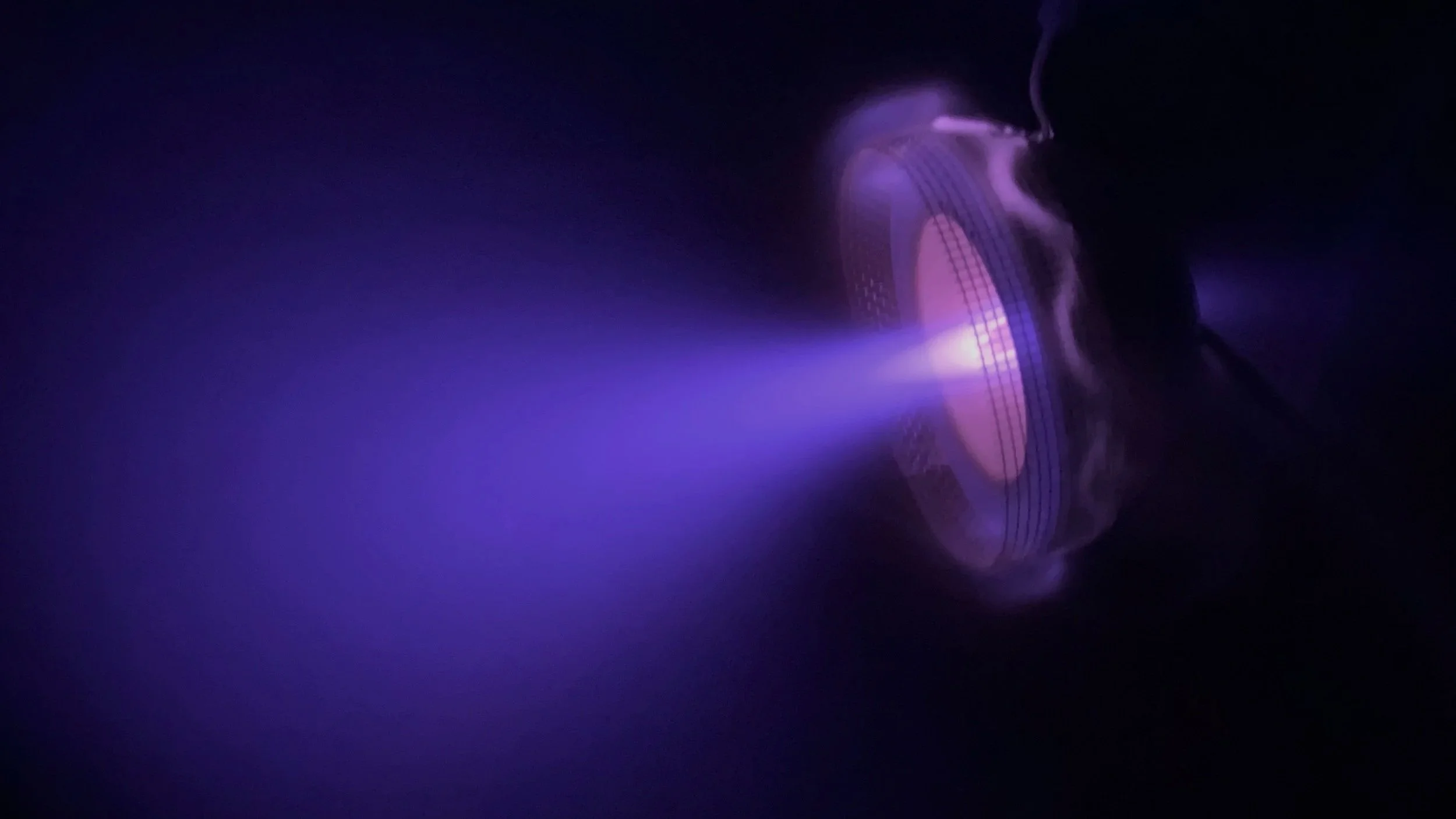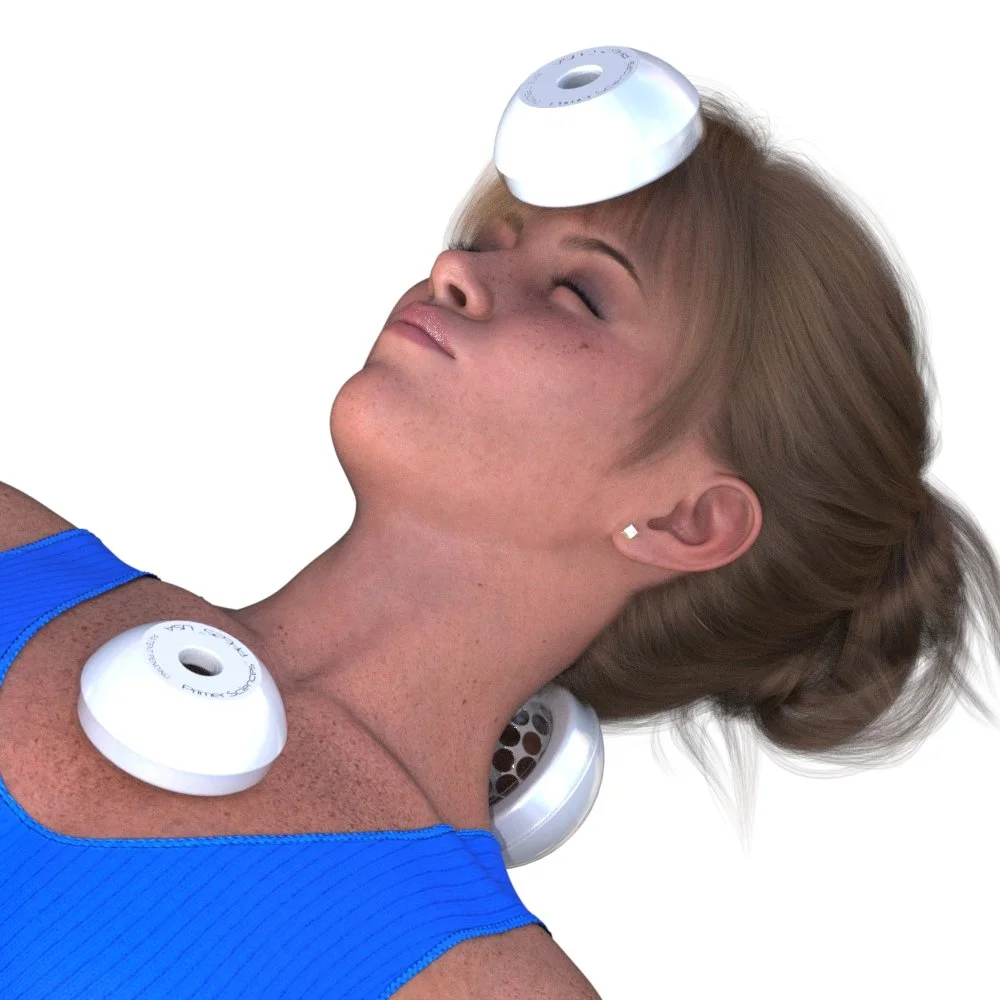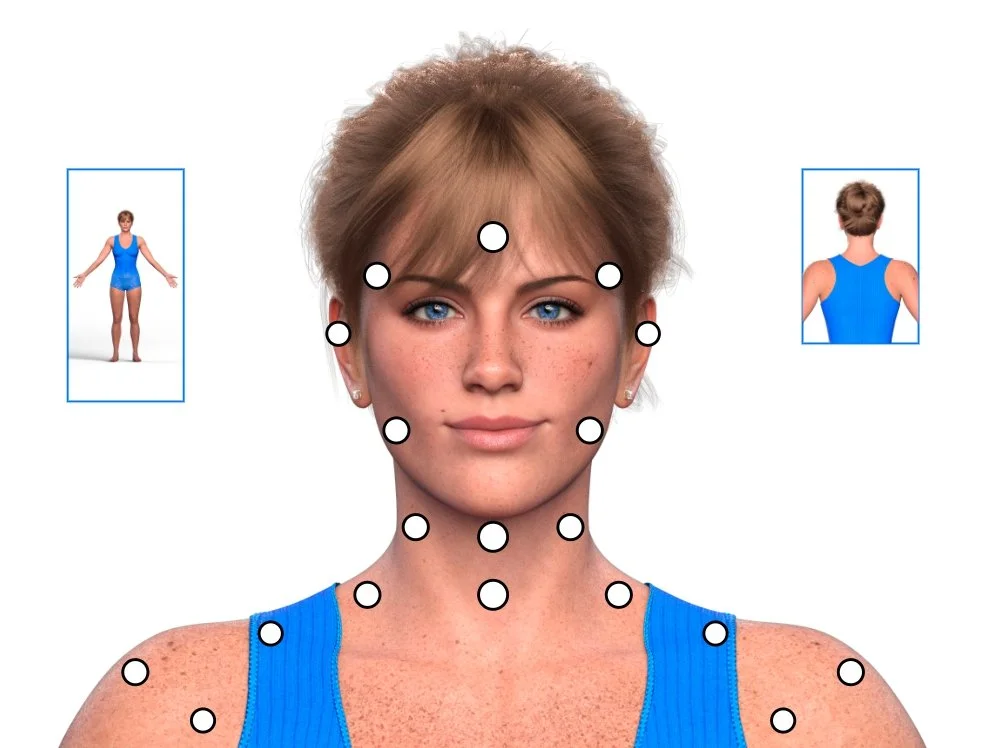
Nineteen Years of Magnetic Field Research.
One Unexpected Breakthrough.
How Artificial Intelligence Changed Everything.
The PFE25™ story - from high-voltage plasma experiments to AI-developed protocols
The Journey: Nearly Two Decades of Innovation
For nearly two decades, we've been at the forefront of magnetic field innovation. From high-voltage plasma experiments to breakthrough health-enhancing devices that delivered extraordinary results, our journey has led us to something truly unprecedented: the PFE25™.
But the PFE25™ didn't happen overnight—it's the culmination of years of research, experimentation, and discovery. Let us take you back to where it all began, through the pivotal moments and breakthroughs that shaped our understanding of magnetic field technology and ultimately led us to create what we believe is our most significant achievement to date.
It All Began in Late 2006
This patent application from 2008 describes a device we developed in late 2006 that used unique magnetic fields to focus beams of plasma for an energy research project. While working on one of the magnetic arrays one day, we discovered it had intriguing properties that sparked our interest in exploring potential applications beyond plasma research.
2007 Brings More Progress
In early 2007, we began producing this machine, which featured a large spinning magnetic array. Weighing 35 pounds, these devices were distributed to people around the world who were seeking alternatives to conventional approaches. This machine produced amazing results which led to a lot of orders simply by word of mouth. Once someone had tried one, they wanted one for their own.
2010 Brings Big Improvements
In 2010, we developed this improved design that weighed only 7 pounds—a significant reduction from our previous 35-pound model. The compact form factor made it far more practical for everyday use.
2013 The Progress Continues
Our 2013 design prioritized durability and portability. Though it added a bit of weight compared to the previous version, the waterproof case provided protection that made traveling with the device worry-free.
2014 Brings a Big Design Change
In 2014, we began developing the first PrimerCube. This design weighed only 4 pounds and marked our first battery-powered device. Engineering this unit required careful attention to ensure the electronics, motor, and rechargeable batteries did not interfere with the spinning magnetic field produced by the PrimerCube.
Despite the interest we were seeing with the PrimerCube, there was a significant challenge in making this technology more widely available. We had distributed PrimerCubes to people around the world through word of mouth, but regulatory constraints in the United States limited how we could share information about the devices.
2019 We Make the PrimerCube Open Source
In 2019, we made the decision to release the PrimerCube as open source technology, publishing complete specifications so manufacturers outside the United States could produce them. Our hope was that this would make the technology accessible to those seeking it. Unfortunately, few manufacturers produced the devices, and those who did deviated from the precise specifications we had provided. The result was devices that did not perform as well as the original PrimerCube and in fact they were not even close.
By June 2024—five years after releasing the open source designs—we publicly acknowledged a troubling reality: the devices being produced under that arrangement weren't meeting the standards we had established with the original PrimerCube design. Users who contacted us reported that these alternative versions produced no meaningful results.
The situation was particularly frustrating given that we had provided precise specifications for replicating the original design. Despite having access to exact plans, manufacturers were producing inferior imitations that failed to deliver the field characteristics that made the original PrimerCube effective. The careful engineering that went into the original design—the specific magnet arrangements, the precise geometric relationships, the specific motor required, the material selections—was being compromised or ignored entirely.
This experience underscored a fundamental truth about our magnetic field technology: precision matters. Small deviations in magnet placement, changes in the motor quality and size, can dramatically alter the effects produced by the device. What appeared to be "close enough" in construction resulted in devices that simply didn't work.
June 2024 A Huge Change
By early June 2024, we had reached a crossroads. Without manufacturers producing authentic PrimerCubes to our specifications, the technology wasn't reaching the people seeking it. We had a clear plan to resume production ourselves, but lacked the capital to make it happen.
Then, less than a week after our public statement about the open source challenges, we received an unexpected message. A tech executive who had followed our Primerfields videos on YouTube reached out. His interest was primarily in our theories on physics and astrophysics, and he wanted to support further research in those areas.
A collage of images of our PrimerField plasma physics experiments. Click on the image to see a larger version.
When we explained that our priority was getting the PrimerCube back into proper production, he asked a simple question: what would it take? Upon hearing the answer, he immediately donated the large funding needed to make it happen. After years of obstacles, we finally had the resources to move forward.
The first PrimerField Video published in 2012 that led to the funding needed to develop the PFE25™
Fall 2024 Gearing Up to Produce PrimerCubes Again
The fall of 2024 was dedicated to preparing for production. We began sourcing all the components needed to manufacture PrimerCubes to our original specifications. Since we had produced these devices before, we expected a relatively smooth process—our injection molds were still in excellent condition, and most parts appeared readily available.
Section view of the PrimerCube
Initially, everything seemed on track. Then the complications began. One issue after another emerged, primarily centered on parts quality. Components arriving from suppliers didn't meet our standards, and this created a critical problem: the PrimerCube requires precise manufacturing tolerances to function as designed. Substandard parts made it impossible to produce devices that met our specifications.
The frustration was significant. Parts that had been easily sourced years earlier were now either unavailable or inconsistent in quality. We found ourselves at an impasse, uncertain how to move forward.
The Birth of the PFE25™
Then an unexpected direction emerged that changed everything. In September 2024, while preparing for PrimerCube production, we began a parallel project: developing a static magnetic array intended to complement the PrimerCube.
What started as a side project quickly became something far more significant. This wasn't just a new design—it represented a fundamental advancement in our magnetic array technology. The early results were remarkable enough that we questioned whether we were seeing what we thought we were seeing.
The PFE25™ shown with the clear polycarbonate cover
By early 2025, it was clear this "side project" had become our primary focus. The static magnetic array was performing beyond anything we had achieved with previous designs, including the PrimerCube itself.
The PFE25™ shown without the clear polycarbonate cover. Do not use the PFE25™ without this clear cover to prevent damage.
This new array offered significant advantages over all our previous devices. No moving parts. No electronics. No power source required. The magnetic field it produced was entirely passive, generated purely through the precise new arrangement of a new type of rare earth permanent magnets within the structure.
A side view of the PFE25™ with the clear polycarbonate cover
Perhaps most importantly, the device had an indefinite lifespan. Once someone owned one, it would function for life with no maintenance, no batteries, and no degradation. This was the product we had always envisioned: something truly permanent that could be used anywhere in the world, regardless of access to electricity or infrastructure.
The PFE25™ clear polycarbonate cover is shown at the top in this photo. This cover can easily be replaced if it is ever damaged. At the bottom in this photo is the PFE25™ with the cover installed and without the cover. Do not use the PFE25™ without this protective polycarbonate cover.
The engineering-grade polymers we selected for construction added another layer of durability. The array could withstand temperature extremes and physical stress far beyond what our previous devices could handle.
A bottom view of the PFE25™ showing the laser engraving and the bottom of the clear polycarbonate cover thread details. The cover can be replaced by simply unscrewing the old one and screwing a new cover in. No tools needed.
A few months into development, we named the device the PFE25™—Primer Field Emitter 25—with "25" denoting the year of its release. We chose "PrimerField Emitter" because the magnetic field geometry produced by this array matches the field structures we described in our PrimerFields videos on physics and astrophysics.
The PFE25™ and the specialized metal container each unit is shipped in.
The PFE25™ generates such a powerful magnetic field that it exceeds standard shipping regulations without proper containment. To solve this, we developed a specialized metal container with strategically placed, extra-thick steel shielding that contains the magnetic field within safe shipping limits. This engineering solution allows us to ship the PFE25™ via all standard shipping methods while maintaining the full strength of the magnetic array inside.
Two PFE25™ arrays shown with their custom-engineered shipping containers.
This custom-engineered shipping container serves two critical functions: it shields external electronics and navigational equipment from the PFE25™'s powerful magnetic field during transport, and features precision-designed internal padding that protects the device from shipping damage. The specialized construction ensures safe handling throughout the shipping process.
When Artificial Intelligence Met Magnetic Innovation
Early in 2025, a remarkable collaboration began between human insight and artificial intelligence that would fundamentally transform how the PFE25™ is used. Working extensively with ChatGPT, an advanced AI system, we began analyzing the patterns emerging from user experiences with the PFE25™.
The Evolution from One to Three
This understanding led to exploring dual-unit configurations. The results were encouraging, but the AI analysis suggested we hadn't yet reached the optimal approach. Further investigation revealed the breakthrough: three PFE25™ units used simultaneously produced dramatically enhanced results that single or dual configurations simply couldn't match. Issues that showed limited response to single-unit placement responded remarkably when addressed with the three-unit protocol.
Initial observations showed that a single PFE25™ unit provided substantial support for many areas of concern. However, through systematic AI-assisted analysis of user feedback and anatomical relationships, a critical insight emerged: the human body functions as an interconnected system, not isolated regions.
Our PFE25™ hsf1.3.2 Placement Protocol showing three PFE25™ arrays being used at the same time. There are over 300 Placement Protocols in our PFE25™ Body Map System at the present time. We will be adding even more Placement Protocols over time.
The AI collaboration revealed another crucial principle: what matters most is where the concern is located on the body, not the specific nature of the concern itself. This insight shifted the entire development paradigm from condition-specific approaches to location-based protocols—a fundamentally more elegant and effective system.
A actual screen capture of the PFE25™ Body Map System on this website. To use this system you simply click on the area you wish to address and you are taken to the page for that area that contains all the Placement Protocols for the area you selected. You do not need to specify the issue you are wanting to address. All that is needed is the body area that you wish to address. A very powerful system so simple that a child can use it.
The Evolution of AI Partnership
As development progressed into the technical implementation phase, the project's needs evolved. Building the sophisticated Body Map System required extensive custom coding and complex data architecture. Based on recommendations from experienced programmers, we transitioned to working with Claude AI, Anthropic's advanced language model, which proved exceptionally capable for the intricate coding requirements the Body Map System demanded.
A screen capture of the upper portion of a Placement Protocol page in PFE25™ Body Map System on this website. This only shows the top part of this detailed guidance page for the forehead area. Each area of the body has its own page like this allowing you to easily address any area of your body.
This shift marked a new phase of accelerated development. Claude's capabilities in generating precise, complex code structures enabled rapid iteration of the placement protocol database and the interactive web systems that power the Body Map. The combination of ChatGPT's early pattern recognition insights and Claude's technical implementation prowess created a comprehensive AI-assisted development pipeline that continues to drive innovation in protocol refinement and system expansion.
The PFE25™ Body Map System: A Patentable Innovation
These discoveries culminated in the development of our proprietary Body Map System—an innovation so significant that we recently filed for patent protection. This AI-informed placement guidance system allows users to simply identify the area of concern on their body and receive precise, detailed instructions for optimal three-unit PFE25™ placement.
The system's efficiency is remarkable: users typically need only 5 to 10 minutes of placement time, though extended sessions are certainly permissible for those who prefer them. The combination of correct anatomical positioning and the PFE25™'s powerful magnetic field characteristics produces results that users often describe as almost immediate.
This collaboration demonstrates how artificial intelligence can accelerate innovation when combined with deep domain knowledge and real-world observation. The AI partnership—from initial pattern discovery to sophisticated technical implementation—didn't replace human insight, it amplified it, revealing patterns and connections that might have taken years to discover through traditional development approaches alone. The result is a continuously evolving system that combines cutting-edge AI capabilities with practical magnetic field technology—a system unique enough to merit intellectual property protection.
A screen capture of the starting point in the PFE25™ Body Map System on this website. You simply click on the hotspots to be taken to a detailed map for that area of the body.










